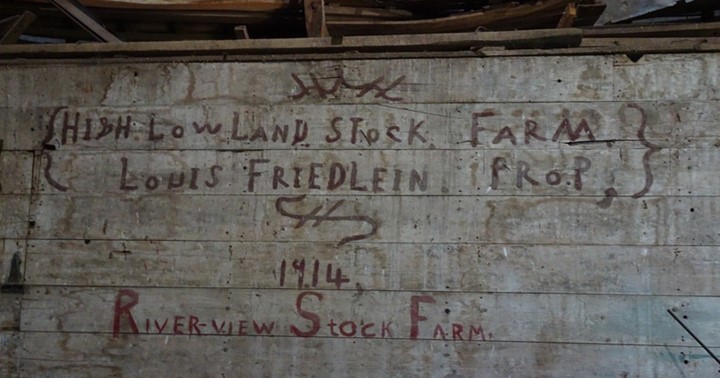
Happy Thanksgiving!


Blog #2, sent in July 2020, featured this barn. However, many persons have been added to the list since I began writing this blog over three years ago. The subject matter is the same but the excitement regarding this barn hasn’t diminished and new discoveries continue to be made.
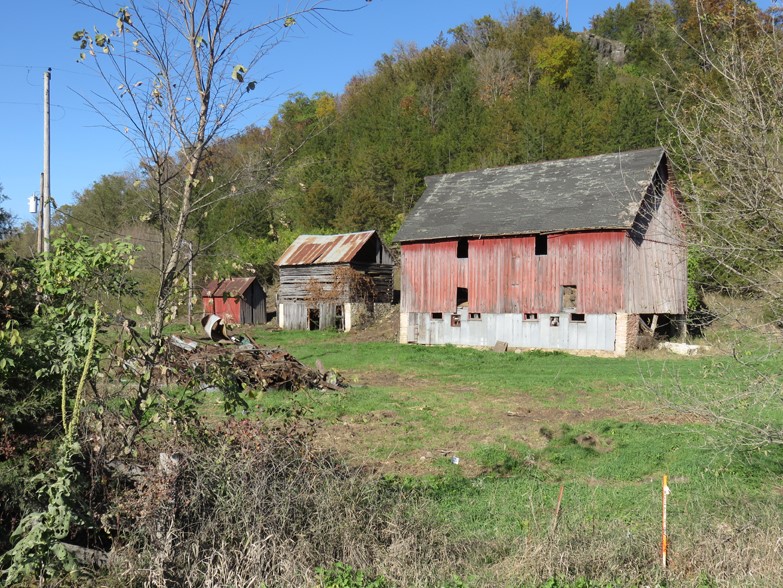
This photo was taken in 2014 in Allamakee County in the Paint Creek Valley area. It didn’t look like there was much hope for saving the barn as it had sat empty for many years. However, a new owner decided it was worth saving.
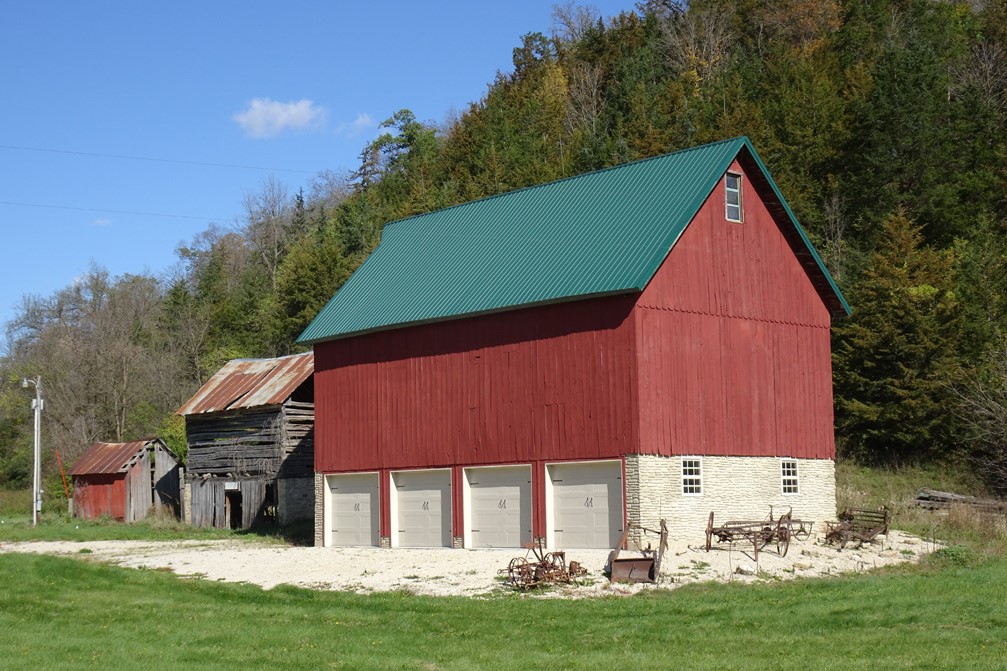
Kudos to the owners for restoring this 1906 barn in recent years. It is a bank barn with the entrance to the loft located on the back side. Major renovations included a new concrete foundation and new concrete floor inside, addition of four double doors, replacement of a few boards and windows, a new steel roof, and paint. It is now used for storage of equipment. The antiques on display were found hidden in weeds around the barn. (2021 photo)
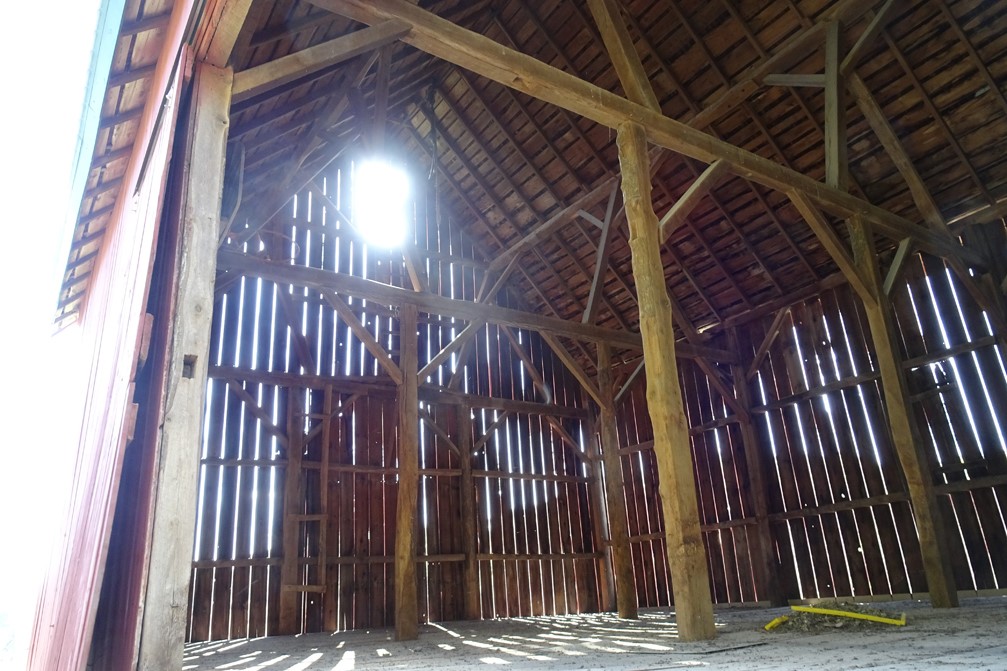
Thirty-seven people were standing on the framework of the barn in the photo below. This day was truly a day to remember, as the itinerant photographer documented this momentous event in the family’s life. More of the story and this photo can be found on page 13 in Iowa Barns yesterday and today.
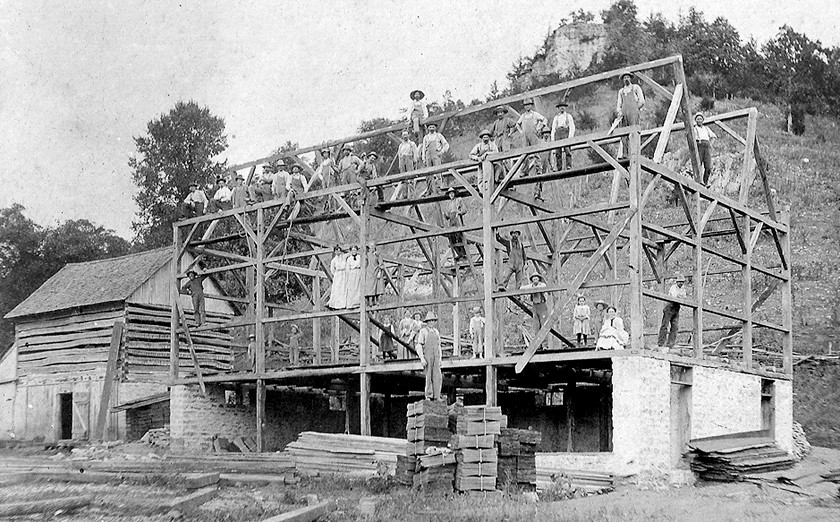
Wanted! The owners would like to give the log building next to the barn to anyone willing to dismantle it, take it, and restore it for his/her own use. The smallest building is gone. If a reader is interested, please contact me via email to discuss this possibility.
Grain bins everywhere are being transformed into homes. In Allamakee County, this one has been converted as the Kelly’s weekend getaway.
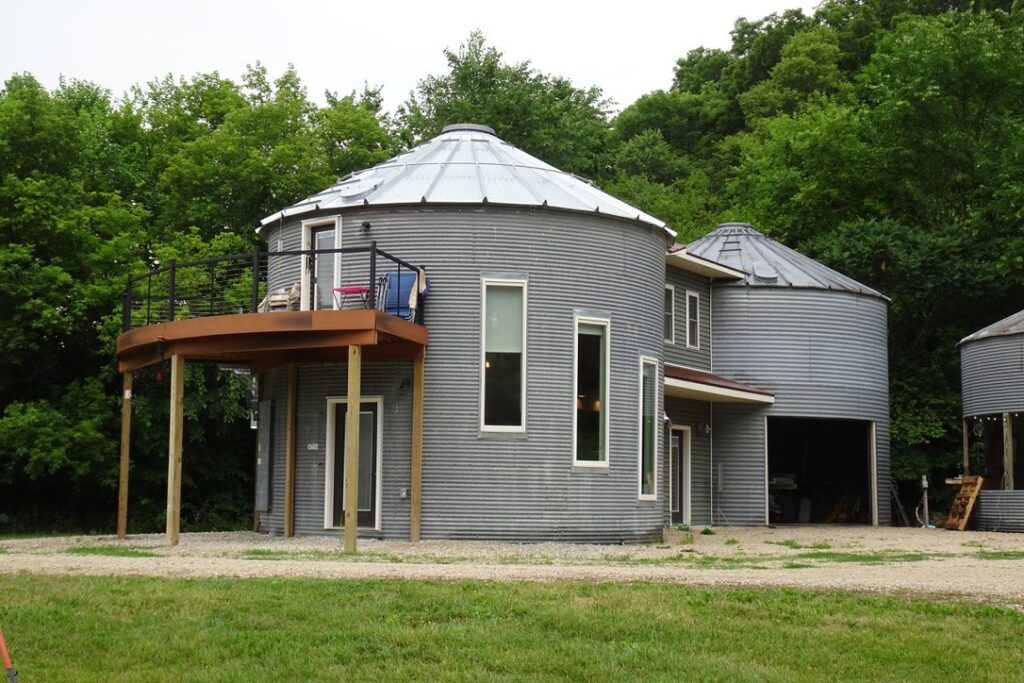
They restored a barn nearby, built in 1906, and this grain bin is their latest project. It has a spacious kitchen and sitting area (See photo below.), two bedrooms, bathroom, novel storage areas, washer and dryer, deck, and an attached grain bin garage. It also has a new roof installed over the original roof, with a layer of insulation between the two. (2023 photos)
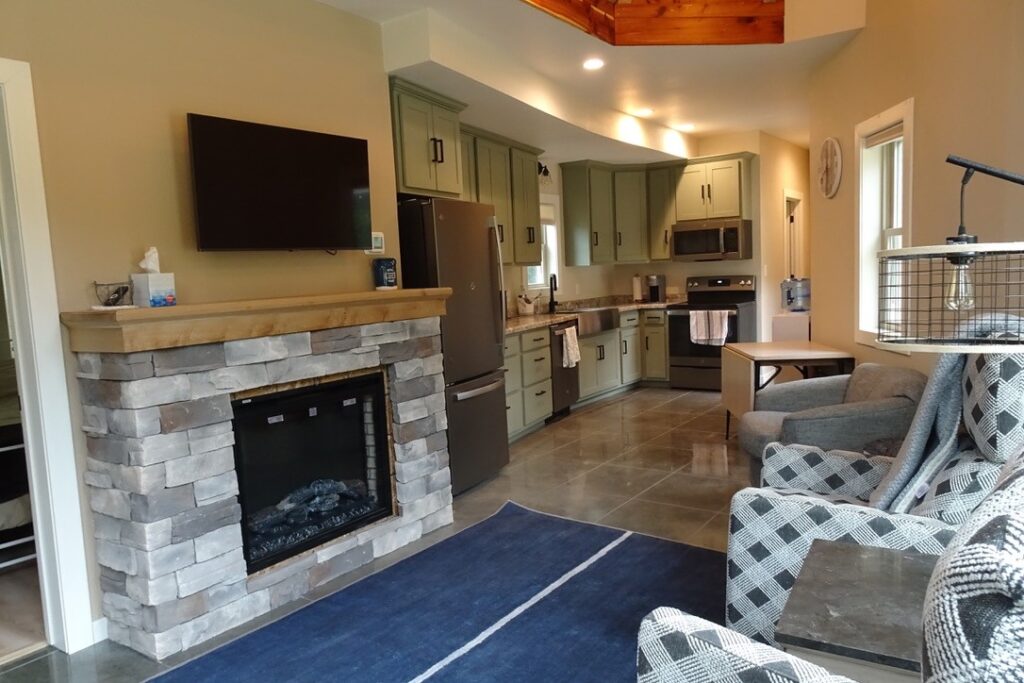
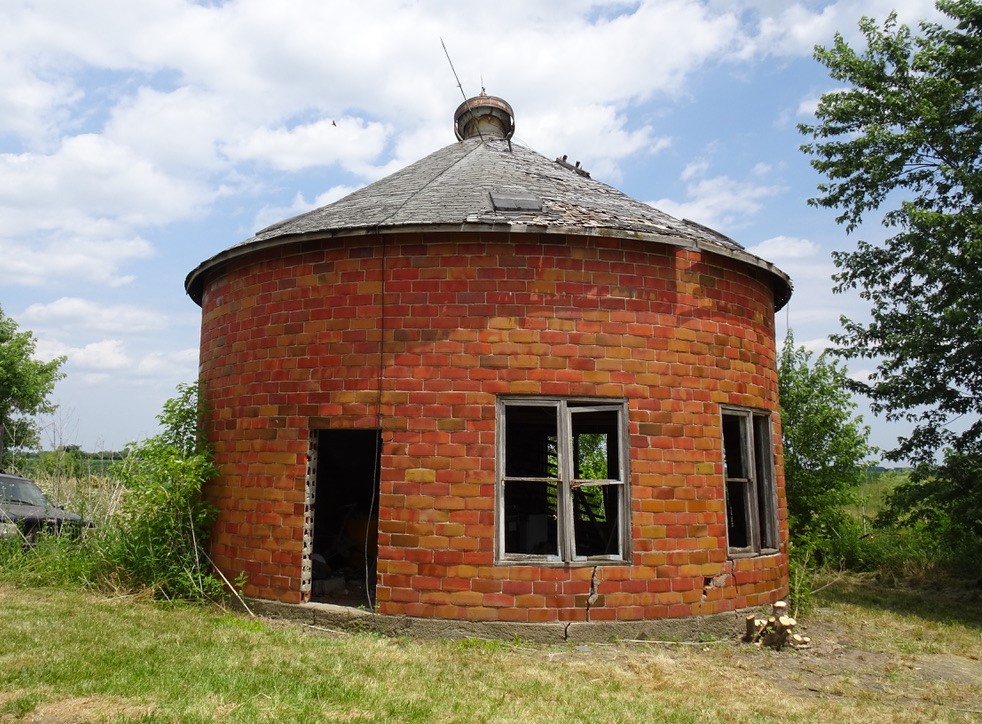
This red clay tile barn in southeast Iowa’s Van Buren County was the home of dairy cows when it was built in 1918. The stalls were situated around the perimeter and hay was stored in the loft. Brothers Warren and Clarence Brown built identical barns three miles apart near Stockport, Clarence’s was built in 1921. Note the abundance of windows on the south side that provided natural light for the cows.
After it was not used as a dairy barn, boxes for laying hens were constructed on the north side. Hens had the barn for themselves when they were not in a box laying eggs. The barn is not in use today.
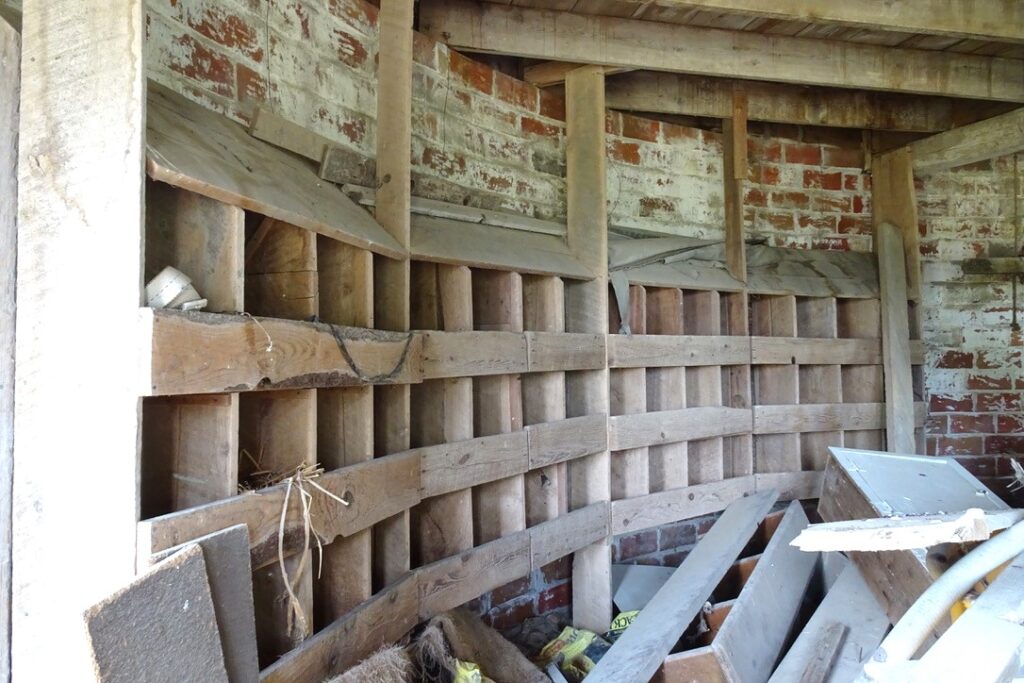
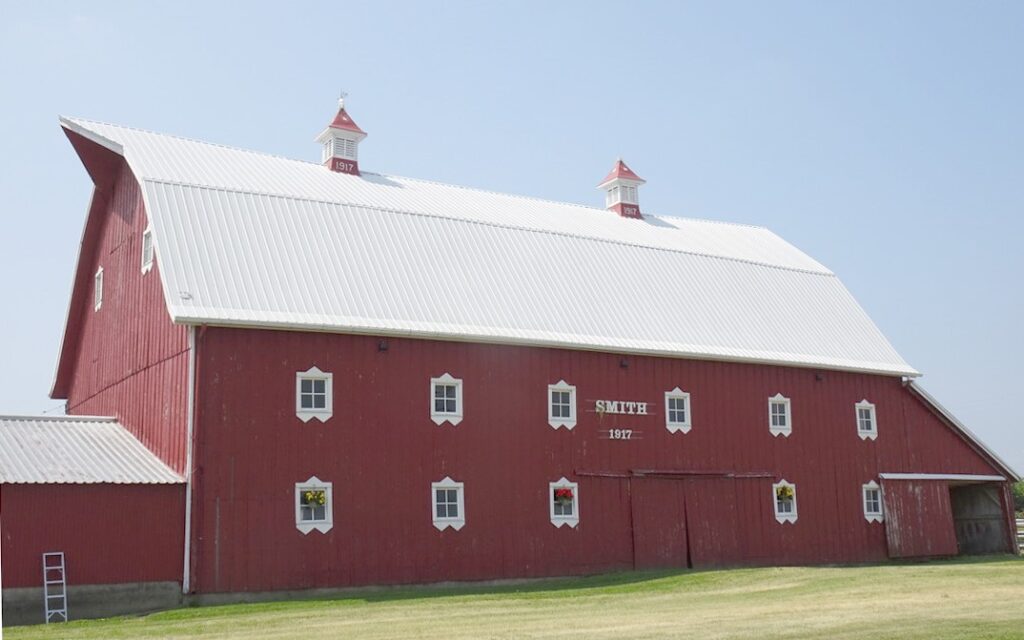
Who built this 40 x 72-foot barn in Dubuque County? Would you believe it was a 16-year-old, the first of 12 barns this young man built in this area? Who had it built? Jack Smith’s grandfather, who was 66 years old at the time.
The barn was built in 1917 using white oak trees from the Smith farm for the framing and fir for the rest. With a height of 42 feet, the loft can store tons of hay and straw for livestock, and it still does.
Since 1853, which was not long after Iowa became a state, six generations have lived on this farm. An interesting note is that Horatio Sanford, a government land agent in Dubuque, bought tracts from settlers who changed their plans, and then re-sold them for a profit. This is one he re-sold to Jack’s grandfather, starting the Smith tradition, with Jack and Anna Smith being the current owners. A unique barn feature is flowers in the windows. How many barns in Iowa have flowers in windows? Very few. Note that this one has real flowers in three of the lower-level windows.

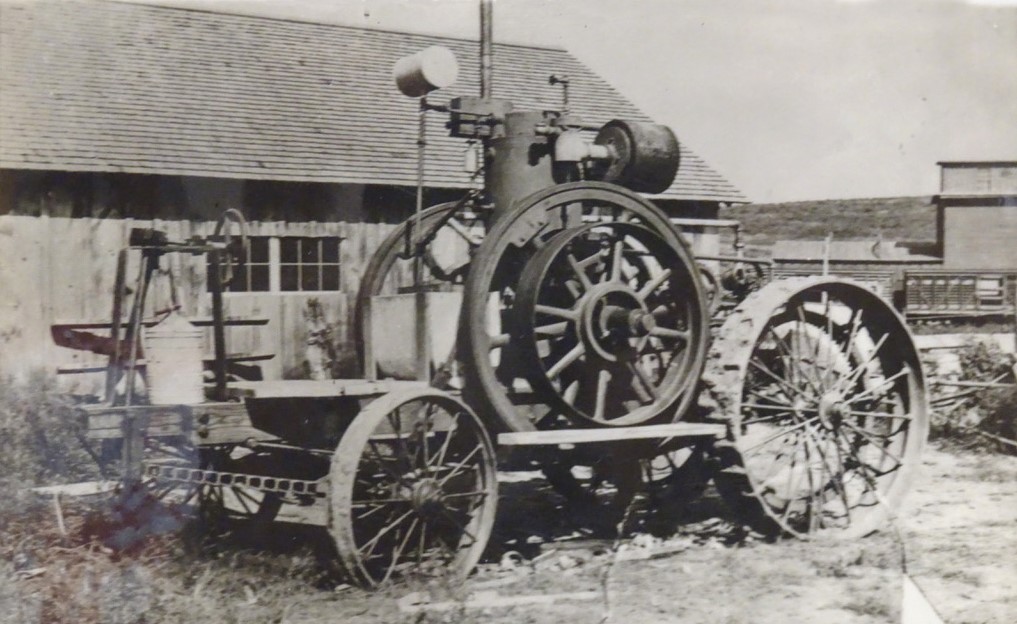
The modern history of threshing grain began with John Froelich, a 43-old farmer in the tiny Clayton County village of Froelich.
John Froelich, looking for ways to make farming more efficient, invented a new one-cylinder gasoline engine. Connected to a threshing machine, it was used to thresh 72,000 bushels of small grain in the fields of South Dakota in 1892. It was also the first gasoline-powered engine that had both forward and reverse gears.
Previously, steam-powered engines were used which weren’t very efficient, were polluting, were heavy to transport long distances, and sometimes resulted in fires that destroyed the crop they were harvesting. What an improvement this new engine was! Pictured above is a photo of the original engine used in the harvest, courtesy of the Froelich museum.
Inventor Froelich took his engine (actually a tractor) to Waterloo to market it to businessmen there. A company was formed with him as president. He later left the company to pursue other interests but tractor experimentation continued. In 1912 the Waterloo Gasoline Engine Company introduced the first “Waterloo Boy,” a kerosene-burning Model “R”. One hundred eighteen were sold that year, and a new Model “N”, which had two forward speeds, was marketed in 1915. In 1918 the Waterloo Company became part of the John Deere Company.
Today, the headquarters of the John Deere Company is in Moline, Illinois, and is one of the largest tractor-producing plants in America.

Above is a Waterloo Boy tractor, a 1918 Model 2030, powered by kerosene, driven each year in the tractor parade at Carstens Farm Days, located at 32409 380th St., Shelby, Iowa. Farm Days will be held on September 9 and 10, 2023.
The Froelich Fall Festival (Fall-der-All), where a model of John Froelich’s one-cylinder engine will be on display, will be held September 23-24, 2023.
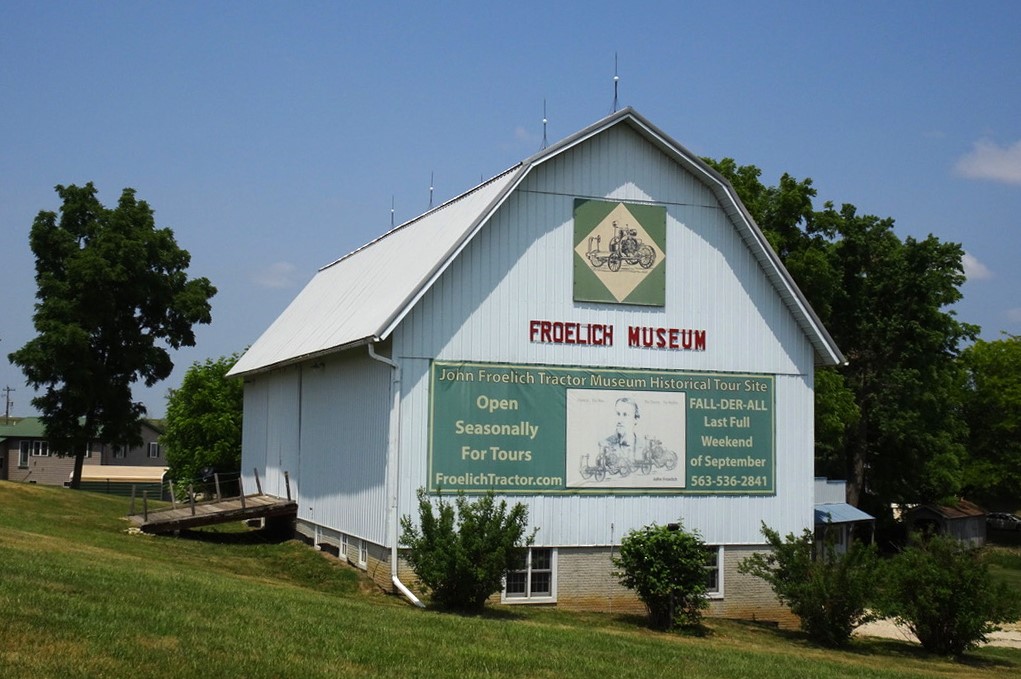
Froelich, an unincorporated village in Clayton County, was named after German immigrant Henry Froelich, who arrived in 1847. Within a short time there was a blacksmith shop, sawmill, stockyards, and even a depot.
This is also where John Froelich (1849-1933), Henry’s son, invented a one-cylinder engine that signaled the beginning of the history of tractors. This amazing invention will be featured in the next blog. He received 14 known patents in his lifetime, which include the one-cylinder gasoline propelled engine, a water-cooling radiator for internal combustion engines, a mechanical corn picker, a dishwashing machine, and more. He was inducted into the Inventors Hall of Fame in 1991.
The site of the Froelich Museum barn, visible from Highway 18, can’t be missed. The barn, built long after Henry died, has exhibits in the loft, and is available for rent for celebratory occasions.
Behind the restored general store (see photo below) is the museum where a model of the engine John Froelich invented is on display, as well as an 1866 country school, passenger depot, freight depot, and warehouse.

The Froelich Fall Festival (Fall-der-All) wlll be held Sept. 23-24, 2023.
Check the website www.Froelichtractor.com for more information. (2023 photos)
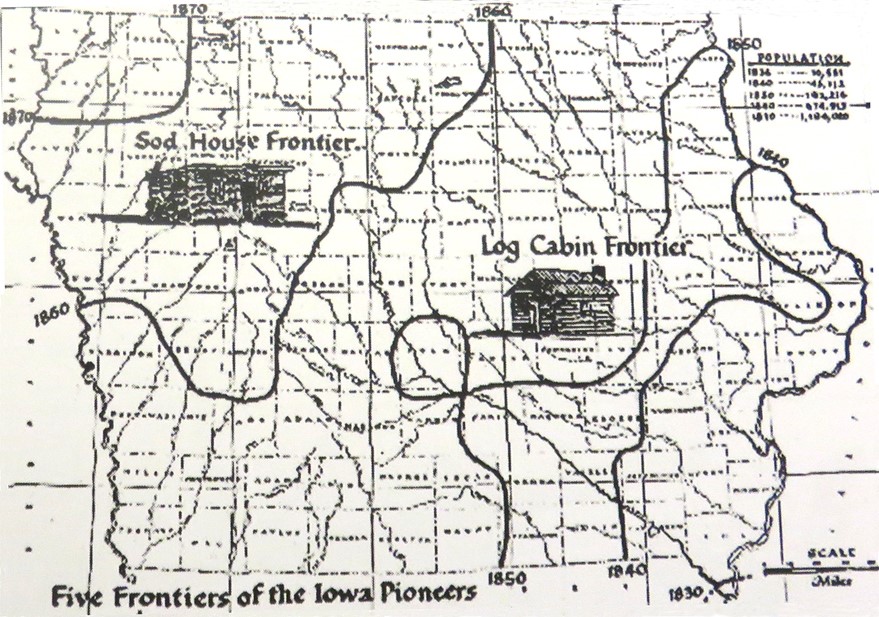
Pioneers made their way across Iowa, beginning in the 1830s. The lines on this map approximate the patterns of land acquisition during settlement as families moved from southeast to northwest between 1833 and 1870.
Pockets of settlement occurred in every part of the state. Norwegians arrived in the Decorah area and surrounding counties in the early 1830s. Immigrants from the Netherlands settled in Pella around 1846. German immigrants settled in many areas around 1850, and in northwest Marshall County brothers and sisters of several related families immigrated from Ireland between 1848 and 1850.
Barns were a necessity for these early pioneers, and their creativity and ingenuity was evident in their buildings. The Gehlen barn was constructed in 1839 by immigrants from Luxembourg who settled near St. Donatus. This Jackson County barn, believed to be the earliest one in Iowa, is located on Highway 52, minutes from both Dubuque and Bellevue.
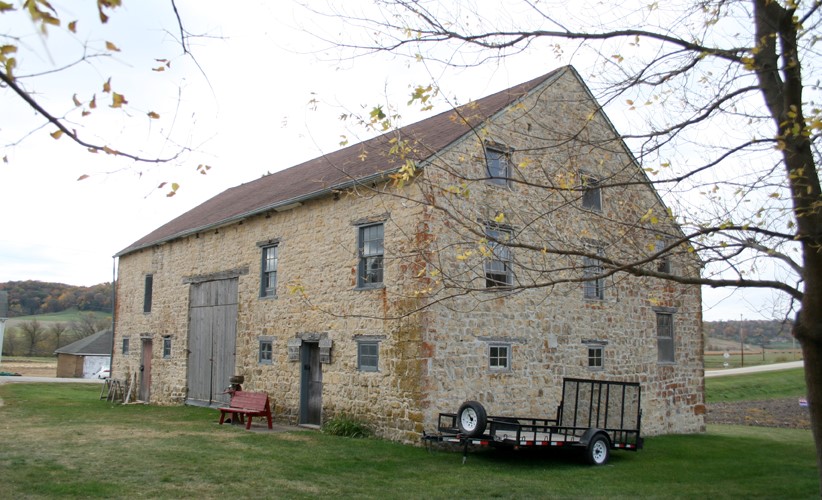
Now the barn’s focus has changed. It hosts parties, family reunions, concerts, craft fairs, barn tours, and more, as well as a brewery. It is a great example of the continued use of a barn (2012 photo). See more of the Gehlen barn story in Iowa Barns yesterday and today, page 55.
(Map published by the Malcolm Price Laboratory School, University of Northern Iowa, Cedar Falls, Iowa, 2003)
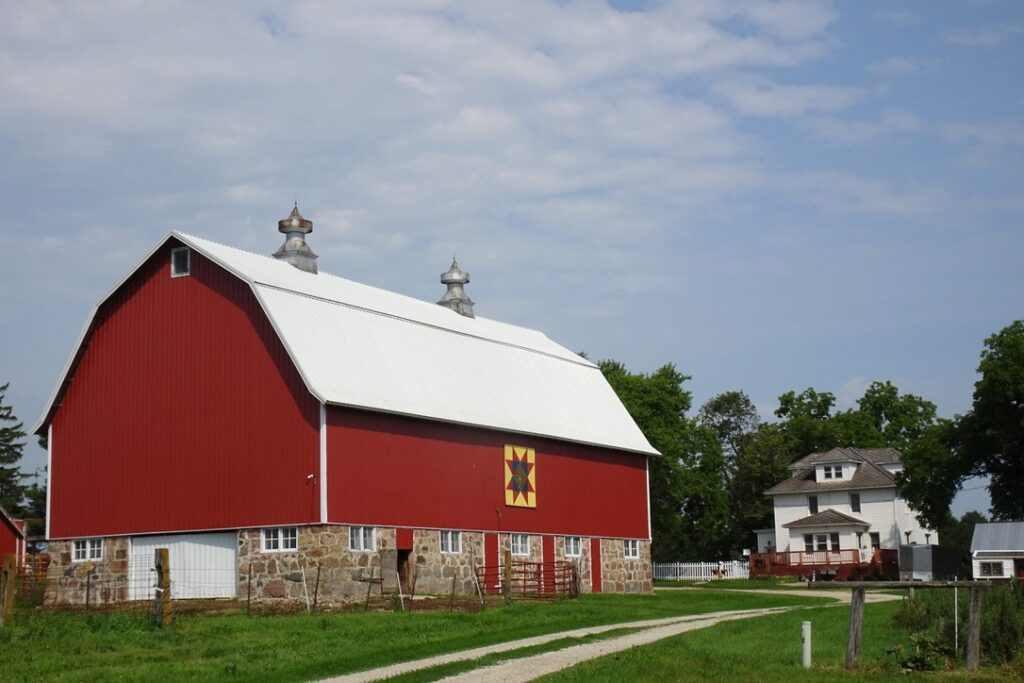
The Nosbisch barn in Chickasaw County near New Hampton, honored as a Century Farm in 2010, has a barn with an amazing history. In 2022, it was also honored by Wallaces Farmer as “Iowa’s Most Beautiful Barn”.
How was it built? In 1926, a stonecutter spent an entire year cutting and placing hundreds of granite stones of varying colors to construct the eight-foot high foundation.
Pictured below shows the huge glacier-deposited stones in one small area of the foundation. The large light-grey granite boulder on the left measures 3 feet x 1 foot. Imagine cutting and fitting hundreds of these heavy stones in place. In Blog #77 (June 4) is a barn in adjacent Floyd County that also has glacial erratic stones in the foundation.
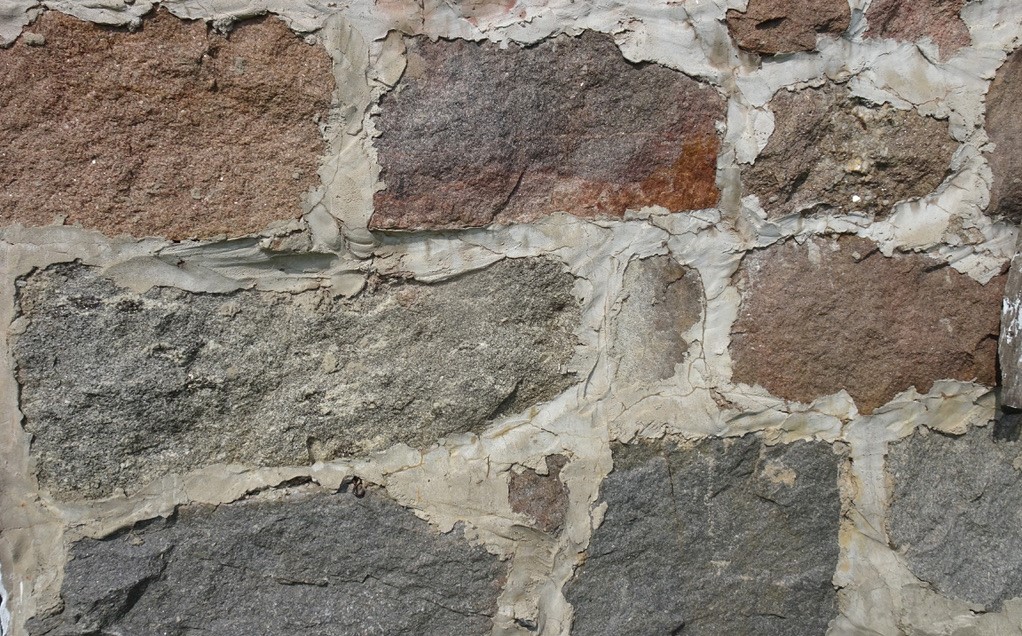
After the foundation was finished, the loft was built. The loft entrance was an earthen ramp, making it a bank barn. Three openings were made in the loft floor so that the hay and straw could be dropped down to the basement level. There was room for 60 loads of loose hay, and straw from 40 acres of oats, but over 50 years ago, large and small bales became the norm.
Inside the basement of the barn there was space for 14 draft horses and stanchions for 28 cows, as well as concrete feeders and room for milk handling and feed storage. This level has been altered to make it suitable for the beef cattle they raise today.
Randy and Morgan Nosbisch are the fourth generation of their family on this farm; their sons are the fifth generation.

This striped round barn, located in Clayton County on Highway 52 south of Guttenberg in eastern Iowa, is like no other Iowa barn. The 36-inch wide vertical sections are metal (painted white), crimped to fit together with the neighboring sections. The roof structure is made up of 15 sections giving it the appearance of a dome as viewed from outside.
Louis Friedlein designed this barn and hired it built in 1914. It is 72 feet in diameter, has five doors, a cupola topped by an unusual aerator, and a 12-foot diameter wood stave silo inside. It is also a bank barn, with the earthen ramp up to the entrance built between two retaining walls, one wall visible on the far left.
It was originally a general-purpose barn, with stanchions for dairy cattle around the silo, as well as a milk room and pens for other livestock. On the upper level was a granary, a feed room, and a large loft that extended around the silo.
It is still in use today as a cattle barn, owned by Larry Friedlein, grandson of Louis. It is on the National Register of Historic Places.
